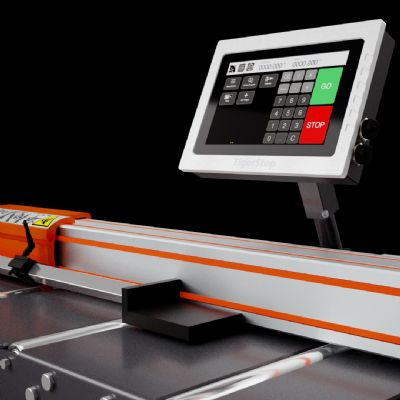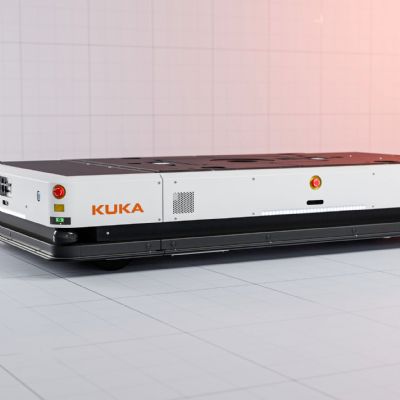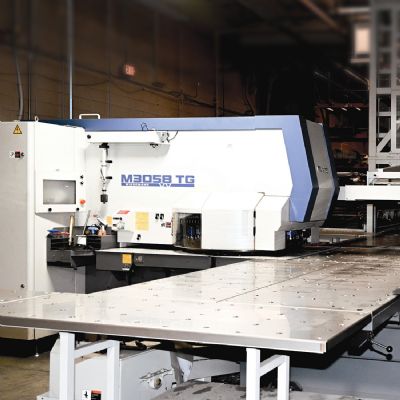“Everyone wants to move heavier loads, and move them faster,” he says. “This requires larger equipment that most suppliers now offer. We’re seeing a lot more servo-driven, multi-axis linear-motion systems for heavier payloads, whereas before, semi-automated overhead cranes handled these tasks. Suppliers understand the forces and dynamics involved, which opens up a whole new world of heavy-payload applications.
“The drive system typically is not the limiting factor—it’s finding a motor large enough to move that mass,” Engelking continues. “If a single large motor isn’t available or practical to drive a single axis, we’re now seeing numerous applications featuring dual servo motors to move heavy payloads. Systems always are limited by the torque and speed of a motor’s output. As for the drive, just pour more steel into it (make it beefier) to move the ultra-heavy loads.”
Some suppliers, Engelking notes, maintain libraries of all of the major motor manufacturers in their product portfolios, enabling flexibility to handle any-sized applications.
“The correct motor specs are very important in providing the right fit for material-handling needs,” he says.
Keeping Components Capable
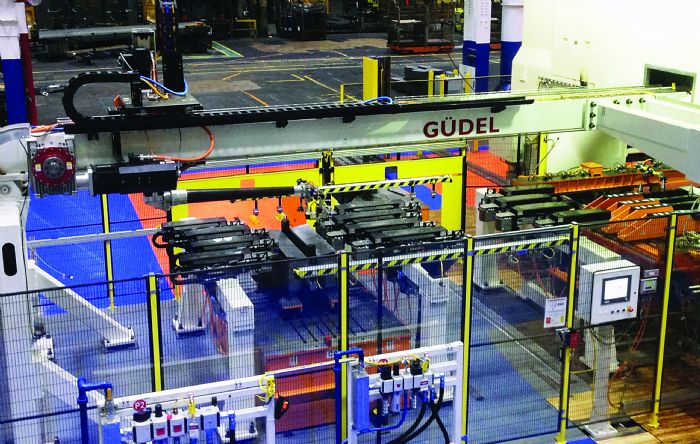 Diving more deeply into the intricacies of drive systems, Engelking lists the four main linear-motion technologies often found in higher-end, highly repeatable automation: linear motors; timing belts and pulleys; ball screws and nuts; and rack-and-pinion.
Diving more deeply into the intricacies of drive systems, Engelking lists the four main linear-motion technologies often found in higher-end, highly repeatable automation: linear motors; timing belts and pulleys; ball screws and nuts; and rack-and-pinion.
“Mechanical friction always is present, so equipment makers constantly seek smoother designs with lower coefficients of friction, which reduce overall energy costs in running linear-motion systems,” he says.
Equipment makers stay busy helping to ensure proper performance and uptime. To this end, Güdel offers a condition-monitoring package. Monitoring vibration, noise, temperature and accelerometers on drive and bearing components helps predict failure. Vibration, noise and temperature spikes all serve as warning signs of impending issues.
Even the cleanest shop floors have dust and other contaminants, and linear-motion components must function reliably in such environments.
“Metal formers should ask their automation suppliers how the equipment protects the linear-motion system from both bearing and drive standpoints,” Engelking offers.
Long, reliable and repeatable life depends on protected bearings, profile guideways and cam followers, he notes, as well as lubricated and protected drive systems.
“Dust, metal shavings and more can work into the grooves of a screw or nut, or into the root of a rack-and-pinion setup, and act as wedges that will freeze the drive,” says Engelking. “Now there’s an unknown emergency-stop condition, teeth coming off of the rack or ball bearings exiting the nut. Good lubrication systems as well as metallic or rubber covers for barrier protection are musts.”
At FABTECH 2024, Güdel presented one such method of protection, its cam-follower technology consisting of a cylindrical roller bearing mounted on a stud that rides on the guide rail. The setup reportedly provides significantly increased resilience to harsh industrial environments as compared to traditional profile guides commonly used in seventh-axis tracks. Güdel tracks feature a wiper/scraper combination on the block that scrapes the rail clean of debris, including paint and weld spatter. The roller’s bearings are completely enclosed to keep out contamination while their larger size enables the track to better roll over leftover debris.
Even with such tools available from equipment suppliers, nothing beats periodic maintenance inspections on the part of metal formers.
Requires Proper Foundation
Beyond the equipment itself, to properly handle payloads, linear-motion equipment requires a solid foundation, increasingly an issue as smaller and older shops pivot toward automation, according to Engelking.
“Anchoring is a hot topic these days due in large part to factory floors in old facilities that lack the proper concrete depth for standard anchors,” he says. “Four to 8 in. of concrete is pretty thin for a proper equipment foundation.”
In response, suppliers offer oversized steel plates containing anchors. Rails and equipment anchor to the plates, which then anchor to the shop floor. Though effective, these foundation remedies add to installation costs, due somewhat to welding requirements.
“Some shops (especially mom-and-pop operations, warehouses and facilities not originally designed for manufacturing) don’t have the power to fire up a welding torch,” says Engelking. “That means hiring in a third-party contractor to weld onsite.”
The solution to this: a cost-reducing no-weld option. For example, Güdel recently debuted a different type of base plate that requires no welding.
“These solutions come with the territory as more manufacturers install automation,” Engelking explains. “Heavy equipment requires 10, 12 or 14 in. of concrete—okay when pouring a new foundation, but some shops aren’t sure of their foundation thicknesses. In a 100-yr.-old weld shop, concrete depth might measure 6 in. in one location and 2 in. in another.”
Beyond thickness, the floor must be level, especially for installation of long rails and equipment, according to Engelking. And, these situations demand appropriate equipment adjustment.
“This means the correct adjustment on all equipment feet,” he says. “The equipment should allow for vertical, horizontal and lateral adjustment—that’s critical.”
Expansion joints also pose challenges.
“Manufacturers should consider the floor layout—where equipment might cross expansion joints or anchoring locations in proximity to, or even over, the joints,” Engelking stresses. “Installing part of the equipment on one side of the joint and part on the other side introduces natural movement of the floor, which will affect installation.” MF
View Glossary of Metalforming Terms
See also: Gudel, Inc.
Technologies: Pressroom Automation







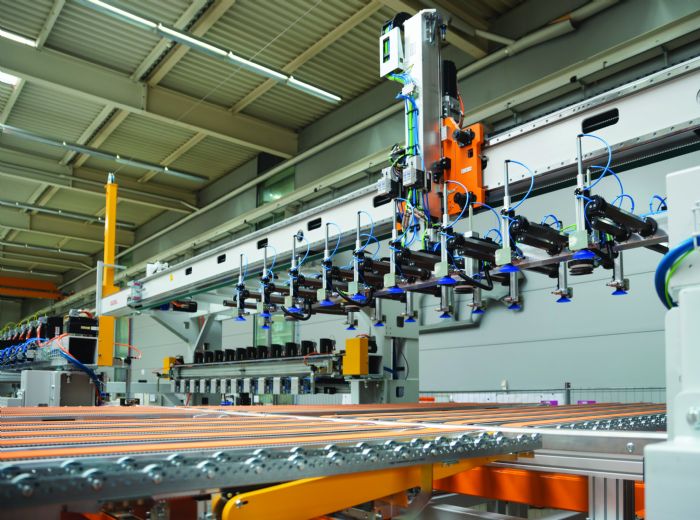 “As automation continues to grow in metal forming environments, users of linear-motion equipment are looking more closely at not just the cost of such equipment, but the maintenance required to keep it running, and when it must be replaced,” says Brian Engelking, senior account manager-Northeast, for Güdel.
“As automation continues to grow in metal forming environments, users of linear-motion equipment are looking more closely at not just the cost of such equipment, but the maintenance required to keep it running, and when it must be replaced,” says Brian Engelking, senior account manager-Northeast, for Güdel.